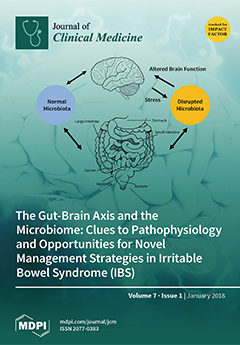Open AccessArticle
Association of Maternal Factors with Perinatal Complications in Pregnancies Complicated with Diabetes: A Single-Center Retrospective Analysis
by
Sho Endo, Yoshifumi Saisho, Kei Miyakoshi, Daigo Ochiai, Tadashi Matsumoto, Yoshinaga Kawano, Masanori Mitsuishi, Junichiro Irie, Masami Tanaka, Shu Meguro, Mamoru Tanaka and Hiroshi Itoh
Cited by 4 | Viewed by 3929
Abstract
Objective: The aim of this study was to clarify the association of maternal factors with perinatal complications in pregnancies complicated with type 1 (T1D) or type 2 diabetes (T2D). Methods: We conducted a retrospective chart review and enrolled 26 Japanese pregnant women with
[...] Read more.
Objective: The aim of this study was to clarify the association of maternal factors with perinatal complications in pregnancies complicated with type 1 (T1D) or type 2 diabetes (T2D). Methods: We conducted a retrospective chart review and enrolled 26 Japanese pregnant women with diabetes who received perinatal care at our hospital between 2008 and 2015. Perinatal complications were defined as one or more of the following: miscarriage, fetal death, fetal dysfunction, fetal structural anomaly, small-for-gestational age, large-for-gestational age (LGA), premature birth, neonatal hypoglycemia, pregnancy-induced hypertension (PIH), deterioration of maternal kidney function, and urgent Caesarean section (CS). The associations between perinatal complications and maternal factors were examined. Results: Approximately 70% and 50% of women with T1D and T2D experienced perinatal complications, respectively. LGA, neonatal hypoglycemia, and urgent CS were major perinatal complications in women with T1D, while PIH and urgent CS were major complications in those with T2D. In women with T1D, pre-gestational HbA1c was significantly higher in women with perinatal complications than in those without. In women with T2D, pre-gestational body mass index was significantly higher in women with perinatal complications than in those without. Conclusions: These findings suggest that while pre-gestational glycemic control remains the most important issue in women with T1D, pre-gestational weight control in addition to glycemic control should be greater emphasized in women with T2D to reduce the risk of perinatal complications.
Full article






